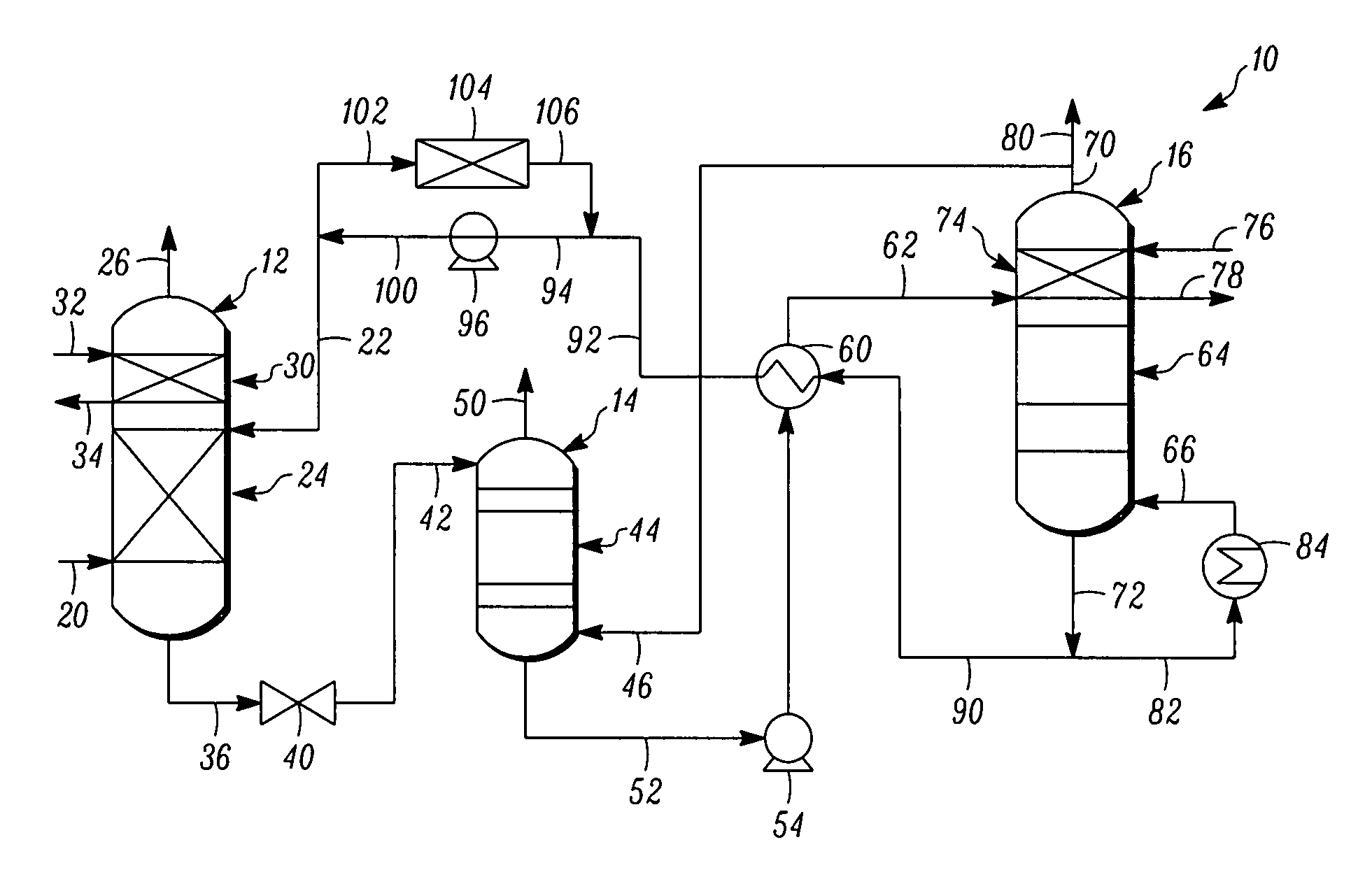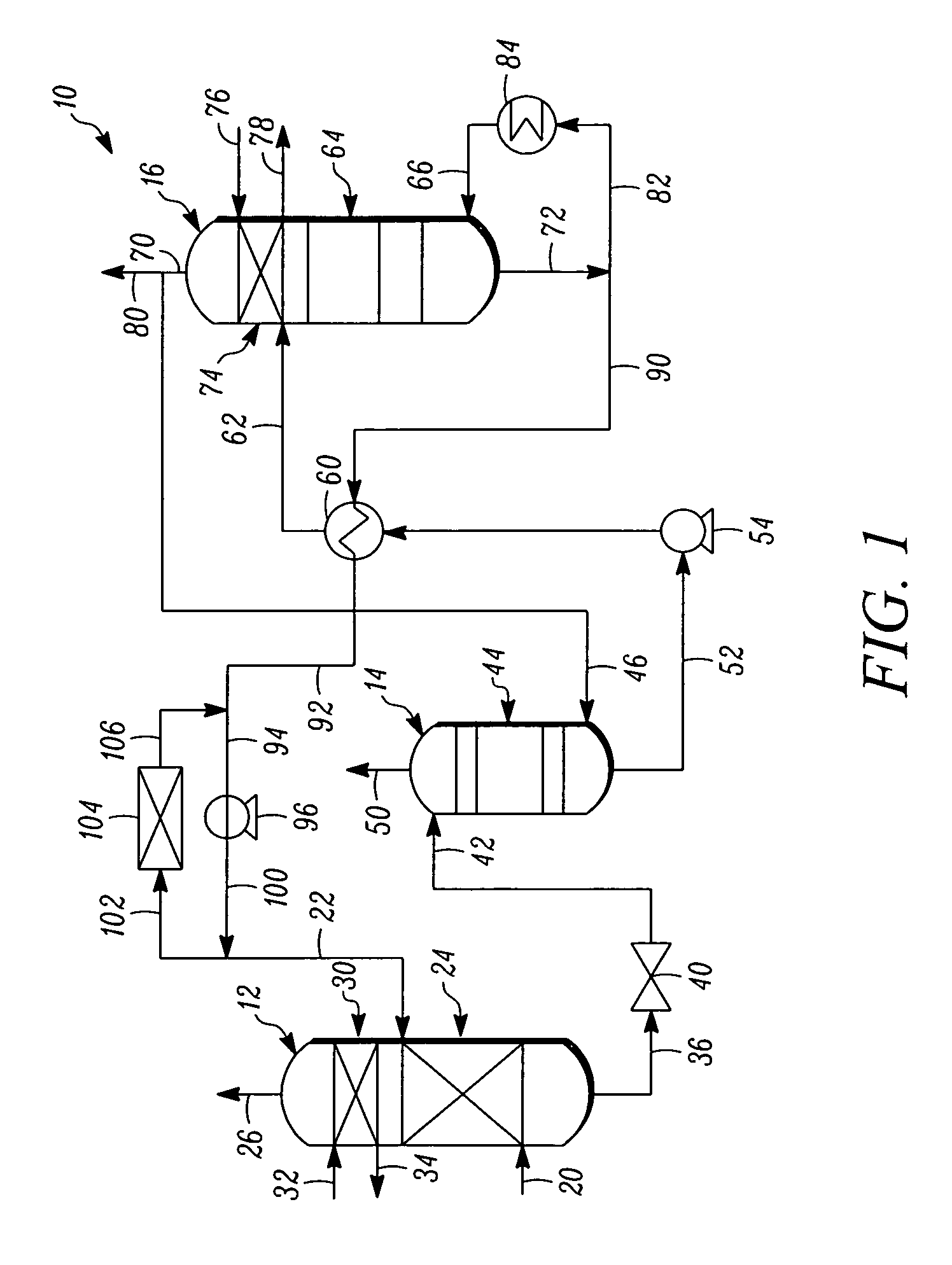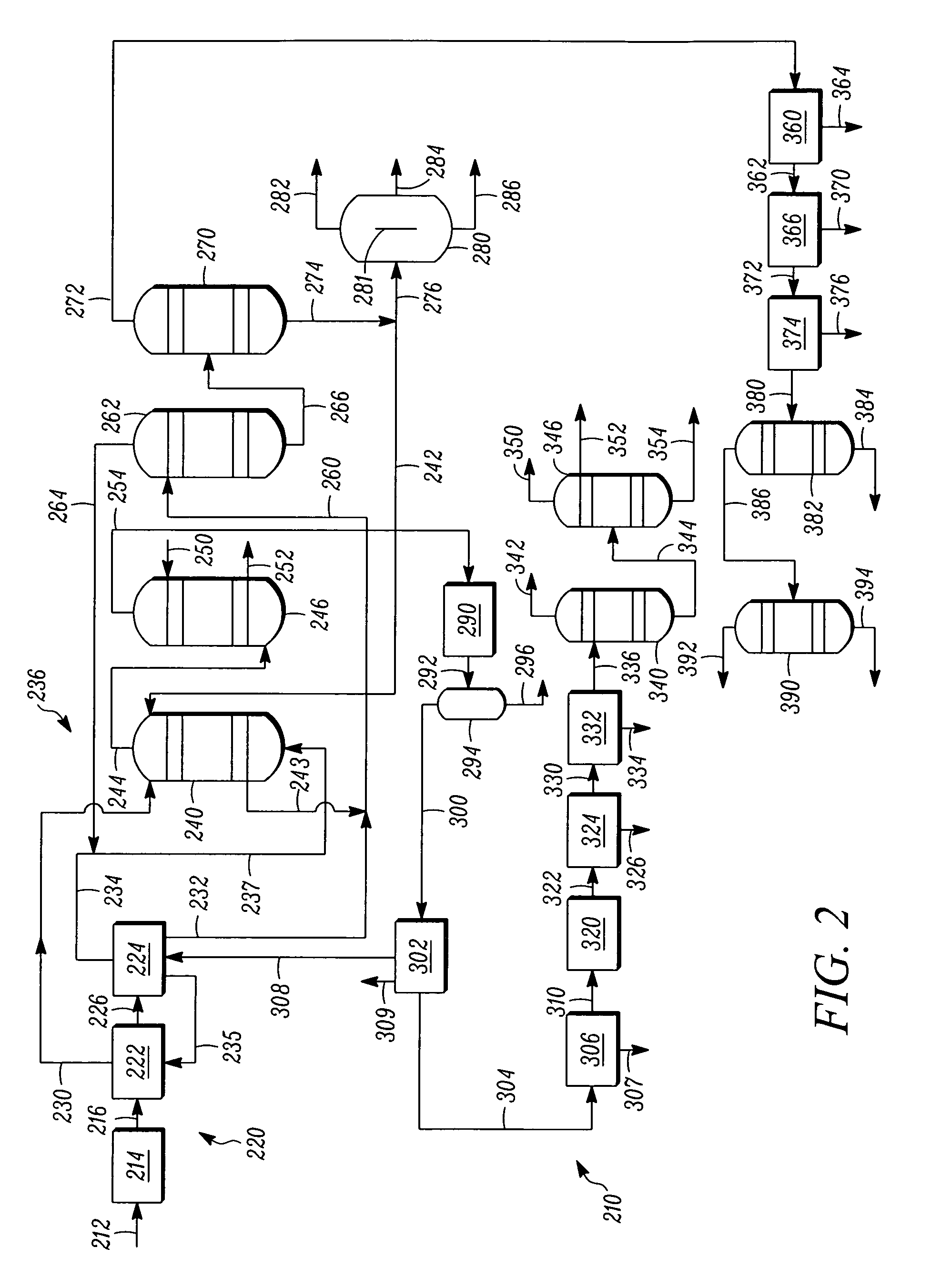Amine treatment in light olefin processing
a technology of light olefin and amine, which is applied in the direction of hydrogen sulfide, liquid degasification, separation processes, etc., can solve the problems of insufficient olefin content of effluent, inability to meet the requirements of olefin requirements, etc., to achieve the effect of free of carbon dioxid
- Summary
- Abstract
- Description
- Claims
- Application Information
AI Technical Summary
Benefits of technology
Problems solved by technology
Method used
Image
Examples
Embodiment Construction
[0029]A stream rich in ethylene and containing carbon dioxide can be processed to effectively and efficiently to remove carbon dioxide therefrom. Additionally, a heavy hydrocarbon feedstock can be effectively and efficiently processed via hydrocarbon cracking processing to obtain light olefins substantially free of carbon dioxide.
[0030]FIG. 1 schematically illustrates an amine treatment section, generally designated by the reference numeral 10, for the processing of a hydrocarbon process stream for the removal of carbon dioxide therefrom, in accordance with one preferred embodiment. As described in greater detail below, the amine treatment section 10 includes the following major components or elements: an absorption zone 12, a first stripping zone 14 and a second stripping zone 16.
[0031]More particularly, a suitable ethylene-rich hydrocarbon and carbon dioxide-containing stream such as derived from hydrocarbon cracking processing of a heavy hydrocarbon feedstock, as described in gre...
PUM
| Property | Measurement | Unit |
|---|---|---|
| Fraction | aaaaa | aaaaa |
| Fraction | aaaaa | aaaaa |
| Fraction | aaaaa | aaaaa |
Abstract
Description
Claims
Application Information
 Login to View More
Login to View More - R&D
- Intellectual Property
- Life Sciences
- Materials
- Tech Scout
- Unparalleled Data Quality
- Higher Quality Content
- 60% Fewer Hallucinations
Browse by: Latest US Patents, China's latest patents, Technical Efficacy Thesaurus, Application Domain, Technology Topic, Popular Technical Reports.
© 2025 PatSnap. All rights reserved.Legal|Privacy policy|Modern Slavery Act Transparency Statement|Sitemap|About US| Contact US: help@patsnap.com



